Abstract
The latest data on tomato yields, planted area, and shipping volumes in Japan’s fruit and vegetable agriculture is from 2022. Nationwide, tomato harvest was 708kt and the cultivated area reached 11.2kha. This figure suggests a relatively high yield per unit area. In terms of shipping volume, Kumamoto recorded the highest volume at 126kt. Considering past trends and characteristics, it can be said that tomato production in Japan is efficient. The high yields are likely due to advances in agricultural technology and cultivation methods, as well as proper management. Furthermore, since the yield is large even though the cultivation area is relatively small, it can be said that tomato farming in Japan makes efficient use of limited space. Furthermore, since Kumamoto recorded the largest shipping volume, it is possible that each region has its own characteristics and advantages. It is possible that climatic conditions, soil suitability, and the development of agricultural infrastructure may influence regional differences. Overall, it can be said that tomato farming in Japan is highly productive and efficient, while taking advantage of the characteristics of each region.
Tomato yield (main data).
Data on tomato yields in Japan was recorded from 1973 to 2022. The peak was recorded in 1979 at 1.04 Mt nationwide, but since then it has been on a downward trend. The current harvest yield is only 68.2% of the peak yield. There are several possible factors behind this trend. These include changes in the agricultural industrial structure, changes in domestic and international market environments, and fluctuations in climatic conditions. In particular, changes in the agricultural industrial structure may have led to changes in tomato production areas and cultivation methods. Fluctuations in domestic demand and import volumes may also be playing a role. On the other hand, Japanese tomato farming is also making progress in technological innovation and efficiency improvements, and these efforts may be partially mitigating the decline in production. In addition, the fact that each region produces its own tomatoes taking advantage of their unique characteristics and advantages is likely to have an impact on trends in tomato production. Overall, tomato farming in Japan is undergoing change, but the goal is to achieve sustainable production through technological innovation and the utilization of local resources.
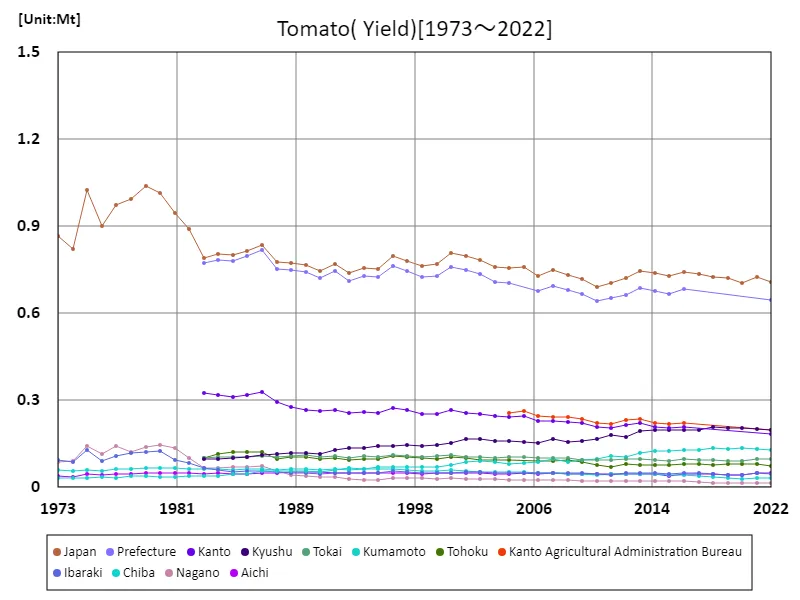

The maximum is 1.04Mt[1979] of Japan, and the current value is about 68.2%
Tomato harvest volume (by prefecture).
Harvest data for fruit and vegetable farming in Japan is recorded by prefecture up to 2022. The overall maximum is 130kt in Kumamoto, which is the current maximum. Considering past characteristics and trends, there are regional differences in harvest yields by prefecture. The fact that Kumamoto recorded the highest value suggests that each region has its own characteristics and advantages in fruit and vegetable farming. Regional climatic conditions, soil suitability, and developments in agricultural technology may all affect yields. Additionally, the latest data exceeds previous records, suggesting that fruit and vegetable farming may be experiencing sustained growth. This is due to factors such as advances in agricultural technology, improved production efficiency, and expanding market demand. It is also possible that regional cooperation, information sharing, and agricultural policy support have contributed to improved yields. It is expected that production that makes use of regional characteristics and networks between producers will lead to the development of fruit and vegetable agriculture. In summary, it can be said that Japanese fruit and vegetable agriculture is aiming for sustainable development while taking into account regional differences and growth factors.
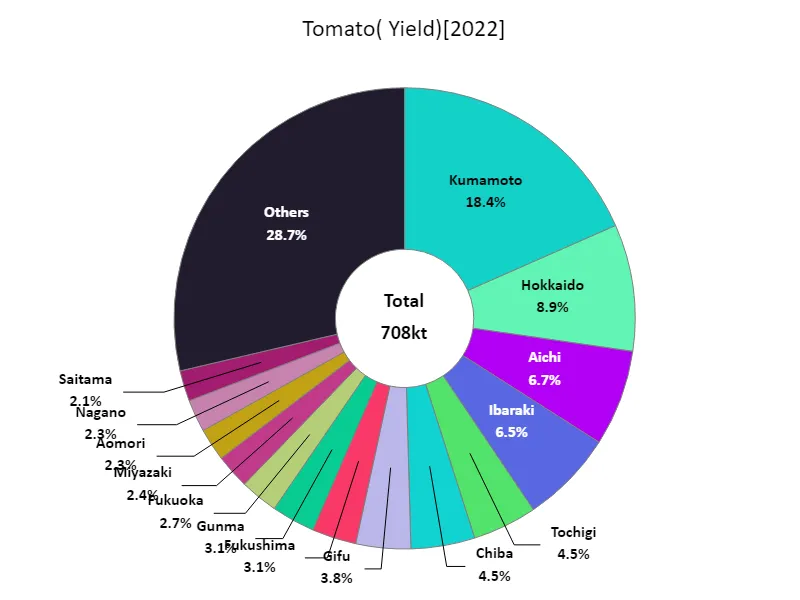

The maximum is 130kt of Kumamoto, the average is 15.1kt, and the total is 708kt
Area cultivated with tomatoes (main data).
Data on tomato planting area in Japan is recorded from 1973 to 2022. The peak was recorded in 1980 at 19.3 kha nationwide, but since then it has been on a downward trend. The current area under cultivation is only 58% of its peak. There are several possible factors behind this trend. First, there is a change in the industrial structure of agriculture. The area planted with tomatoes may be decreasing due to conversion to other crops and increasing urbanization. Changing market demand and import competition may also be affecting acreage. Additionally, technological innovation and efficiency initiatives are also influencing changes in acreage. Increased production efficiency and the introduction of labor-saving measures may have reduced the amount of space required. In addition, differences in growing conditions and demand from region to region likely also affect the differences in cultivated area. Overall, the area of land cultivated with tomatoes in Japan is on the decline, but this is due to a variety of factors. It is understood that in addition to structural changes in agriculture, technological innovation, and changes in the market environment, regional differences are also influencing trends in cultivated area.
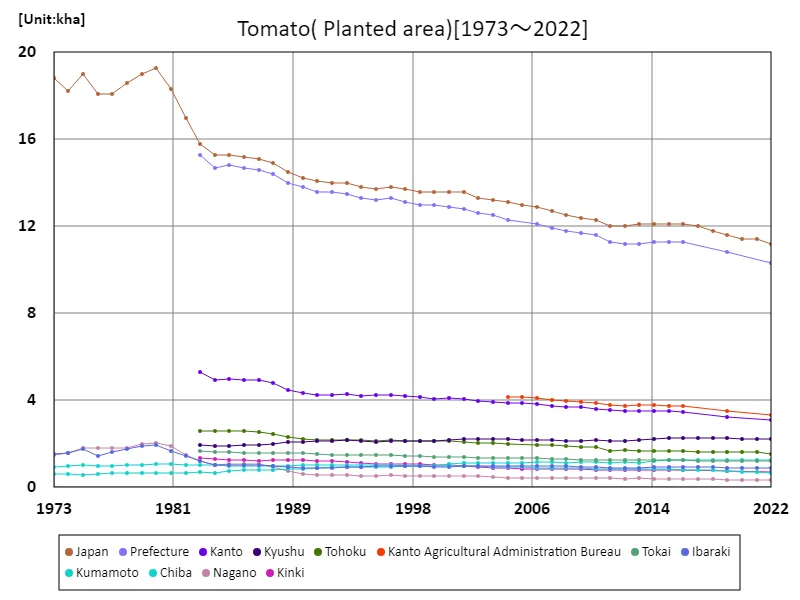

The maximum is 19.3kha[1980] of Japan, and the current value is about 58%
Tomato cultivation area (by prefecture).
Data on the area of cultivated fruit and vegetable farming in Japan is collected by prefecture up to 2022. The largest overall is 1.25kha in Kumamoto, which is the current maximum value. Considering the characteristics and trends to date, there are regional differences in cultivated area by prefecture. The fact that Kumamoto recorded the highest value suggests that each region has its own characteristics and advantages in fruit and vegetable farming. Regional climatic conditions, soil suitability, and developments in agricultural technology may affect the area under cultivation. Additionally, the latest data exceeds previous records, suggesting that fruit and vegetable farming may be experiencing sustained growth. This is due to factors such as advances in agricultural technology, improved production efficiency, and expanding market demand. Furthermore, it is possible that regional cooperation, information sharing, and agricultural policy support have contributed to the expansion of cultivated area. It is expected that production that makes use of regional characteristics and networks between producers will lead to the development of fruit and vegetable agriculture. In summary, it can be said that Japanese fruit and vegetable agriculture is aiming for sustainable development while taking into account regional differences and growth factors.
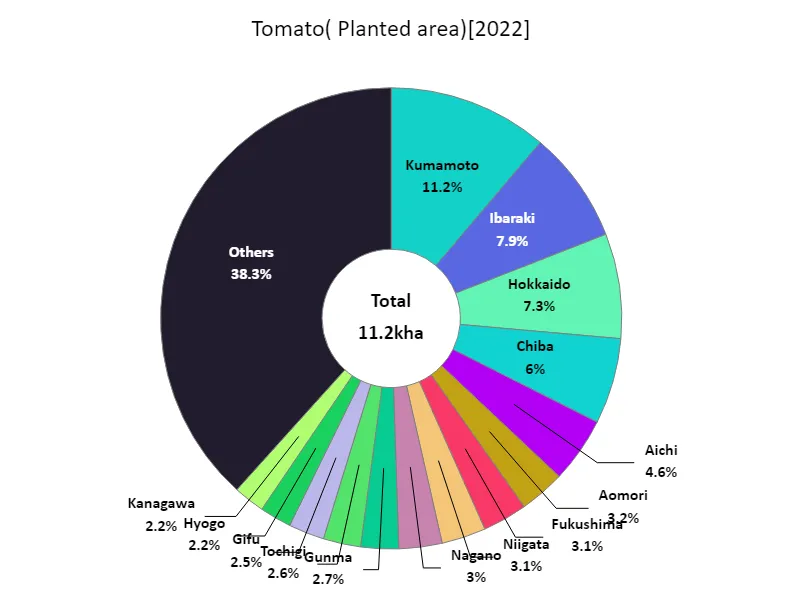

The maximum is 1.25kha of Kumamoto, the average is 238ha, and the total is 11.2kha
Tomato shipments.
Tomato shipping volume data for Japanese agriculture is available up to 2022. The largest overall was Kumamoto at 126kt, with an average shipping volume of 13.7kt, totalling 645kt. Considering past characteristics and trends, there are significant regional differences in tomato shipping volumes. With Kumamoto recording the largest shipping volume, it can be seen that tomato production varies from region to region. Regional climatic conditions, soil suitability, and developments in agricultural technology may affect shipping volumes. In addition, with the overall average shipping volume being 13.7kt, it can be said that tomato production is relatively stable. This may be due to advances in agricultural technology and improvements in production management, which have allowed stable production to be maintained. Furthermore, with total tomato shipments at 645kt, it is believed that Japan’s tomato agriculture is adequately meeting domestic demand. In addition, a certain amount of exports may also be taking place. In summary, Japanese tomato farming has a production system in place that meets the demand of the domestic market while retaining regional characteristics and stable productivity. Advances in agricultural technology and improvements in production management have contributed to the stable supply of tomatoes.
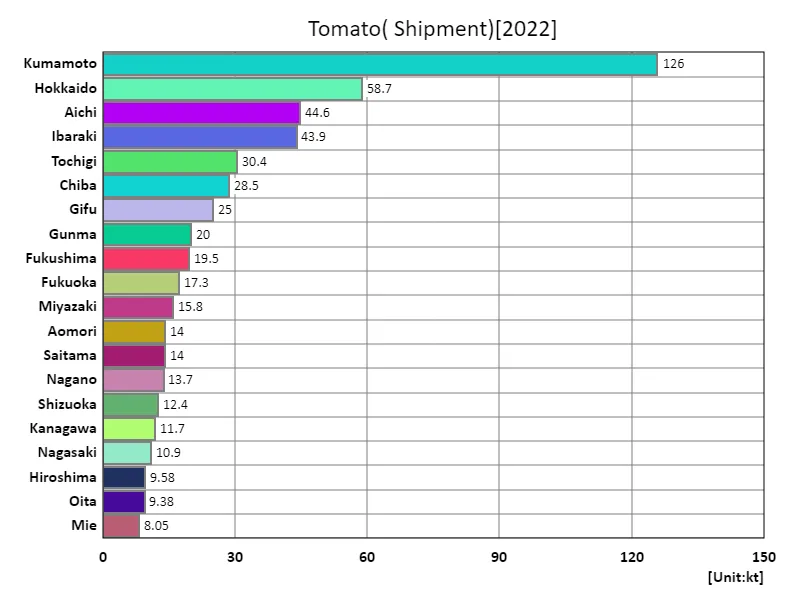

The maximum is 126kt of Kumamoto, the average is 13.7kt, and the total is 645kt
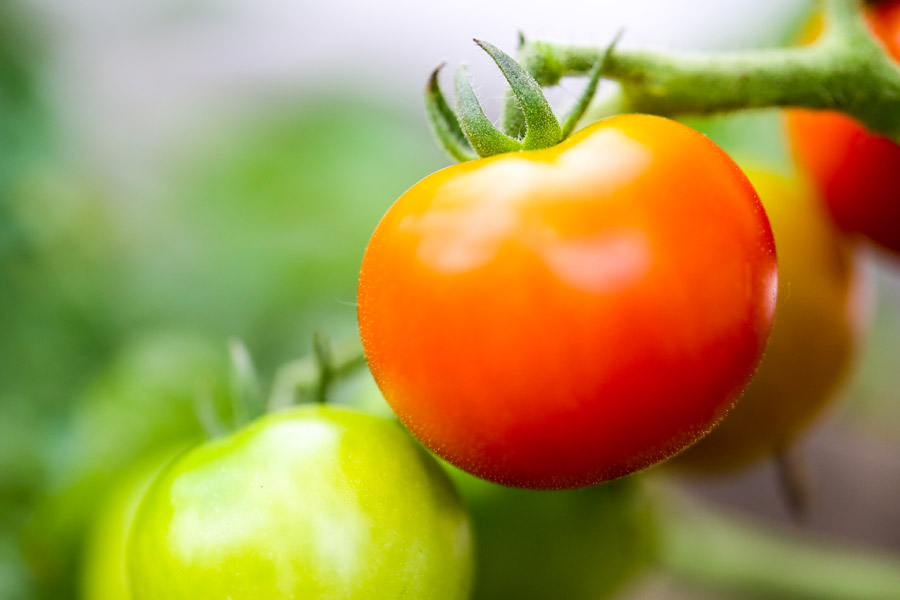


Comments